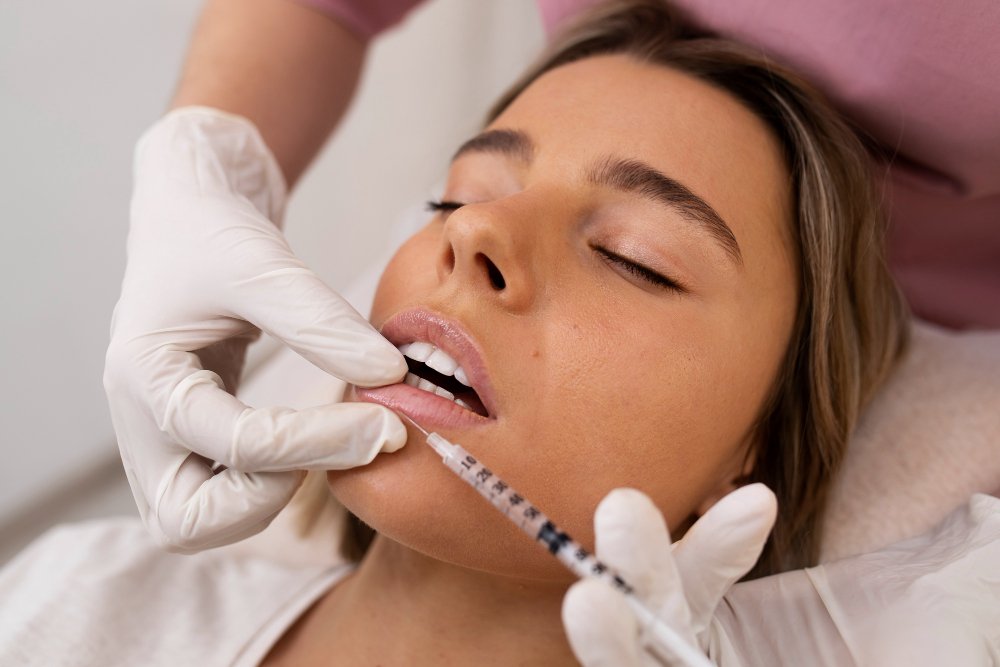Dermal fillers are known for their rapid solutions and ease of fitting into the busy schedules of the modern lifestyle. Procedures taking up to an hour and minimal to no downtime recovery period are more than just incentives for individuals to have these injectables as their beauty boosters. Nonetheless, aftercare is important to avoid complications and have the best possible results.
The post-treatment period of dermal fillers is characterized by bruising, swelling, tenderness, and redness. These side effects are common among most patients and usually disappear in a few days. Here are some useful tips to help you avoid serious risks or complications.
What are dermal fillers?
Dermal fillers, otherwise known as soft tissue fillers, are subcutaneous injectables made of soft gel-like substances. They temporarily volumize facial features to correct the contour and fill wrinkles and folds. The US Food and Drug Administration (FDA) has approved the injections of the medical device implants for the following concerns:
● Moderate-to-severe facial wrinkles and skin folds
● Lips, cheeks, chin, and jawline couture imperfections
● Volume loss in the back of the hand
● Facial fat loss in people with human immunodeficiency virus (HIV)
● Acne scars on the cheek
Dermal fillers are classified by the main ingredients used in their compositions. These materials include hyaluronic acid, calcium hydroxylapatite (CaHA), poly-L-lactic acid (PLLA), and polymethylmethacrylate (PMMA). Based on the target area and the type of soft tissue filler, the effects of gel injections can last up to 2 years.
The aesthetic results they produce without any intervention of surgical solutions have raised the popularity of dermal fillers. Now, they are available under various brand names and sold offline and online. Many people choose to buy dermal fillers online due to the convenience and variety of options available.
Despite their widespread presence in the market, self-administration of dermal fillers is extremely dangerous and can cause serious consequences. Therefore, injection procedures are only recommended under certified practitioners.
Different Types of Dermal Fillers
Understanding the different types of dermal fillers can help you make an informed decision about your treatment. Here are some common types:
● Hyaluronic Acid (HA) Fillers: These are popular for their natural-looking results and safety profile. HA fillers are often used to add volume to the lips, cheeks, and other facial areas.
● Calcium Hydroxylapatite (CaHA) Fillers: These provide longer-lasting results compared to HA fillers and are typically used for deeper wrinkles and facial contouring.
● Poly-L-lactic Acid (PLLA) Fillers: Known for stimulating collagen production, PLLA fillers are used for facial volume restoration and can last up to two years.
● Polymethylmethacrylate (PMMA) Fillers: These are semi-permanent fillers used for deeper wrinkles and folds, providing long-lasting results.
Among these, Korean fillers have gained recognition for their high quality and innovative formulations, making them a popular choice for those seeking effective and affordable options.
Things to do after your dermal filler treatment
The dermal filler post-treatment period is usually followed by side effects that go away within a week. You can resume your daily activities right after the injection sessions while taking the following instructions into account:
● Put cold compresses on the injection spot
● Take Tylenol to relieve the pain and swelling
● Sleep face up and with your head slightly elevated
● You must seek immediate professional care in case the symptoms worsen or you experience visual problems.
Things not to do after your dermal filler treatment
Although serious complications are uncommon, proper aftercare is necessary to avoid such cases. Here are the main things you should avoid to have the favorable results:
● Strenuous exercise for 24 to 48 hours
● Intense movements in the treated areas
● Massaging the treated area
● Alcohol consumption
● Excess amount of salt
● Direct sunlight and heat exposure
● Blood thinners such as aspirin, ibuprofen, etc.
How to Enhance Your Dermal Filler Results
To get the most out of your dermal filler treatment, consider incorporating these tips into your post-treatment care routine:
● Stay hydrated: Drinking plenty of water can help maintain the plumpness of your skin.
● Follow a healthy diet: Eating a balanced diet rich in vitamins and minerals can support skin health.
● Use gentle skincare products: Avoid harsh exfoliants and opt for gentle, hydrating products.
● Protect your skin: Use sunscreen with at least SPF 30 to protect your skin from UV damage.
When to See a Doctor
While most side effects are mild and temporary, it is crucial to know when to seek medical attention. Consult your healthcare provider if you experience:
● Severe pain or discomfort
● Persistent swelling or bruising beyond a week
● Signs of infection, such as increased redness or warmth at the injection site
● Unusual lumps or asymmetry in the treated areas
● Visual disturbances
Conclusion
Dermal fillers are generally considered safe procedures that need almost no downtime. This means the risks and complications they may cause are relatively rare. But to prevent such events, it is important to follow some simple guidelines to recover smoothly. Pain, swelling, and bruising are the side effects seen commonly among those who receive dermal fillers. However, they are easily soothed and relieved by remedies like icing. Prevention from strenuous activities and alcohol can also speed up recovery. If you experience abnormal pain or issues associated with your vision, consult your practitioner immediately. Above all, your health care provider’s advice can be more aligned with your specific issue and medical history.

